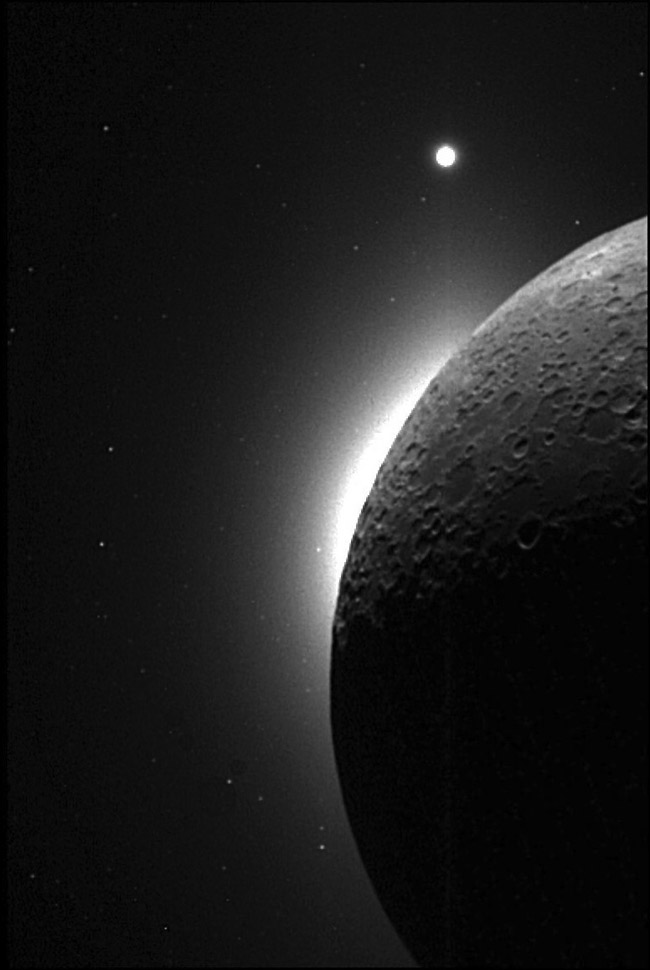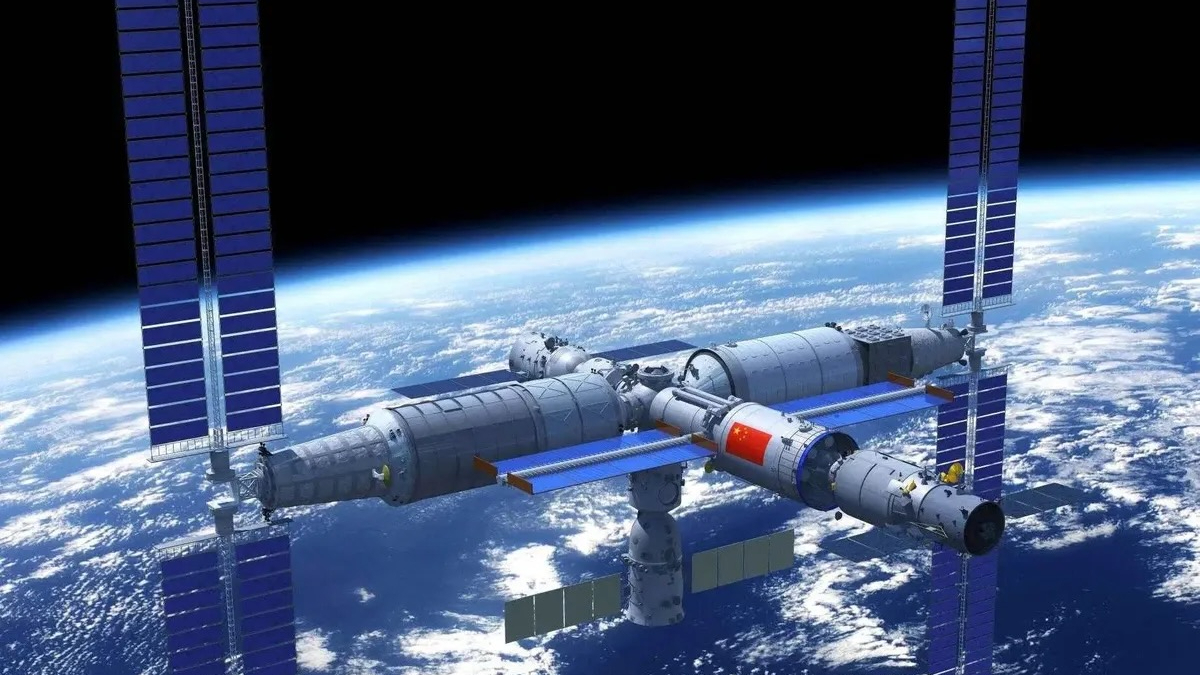Atmosphere of the Moon
On the moon, there's no air to breathe, no breezes to make the flags planted there by the Apollo astronauts flutter. However, there is a very, very thin layer of gases on the lunar surface that can almost be called an atmosphere. Technically, it's considered an exosphere.
In an exosphere, the gases are so spread out that they rarely collide with one another. They are rather like microscopic cannon balls flying unimpeded on curved, ballistic trajectories and bouncing across the lunar surface. In the moon's atmosphere, there are only 100 molecules per cubic centimeter. In comparison, Earth's atmosphere at sea level has about 100 billion billion molecules per cubic centimeter. The total mass of these lunar gases is about 55,000 pounds (25,000 kilograms), about the same weight as a loaded dump truck. Every night, the cold temperatures mean the atmosphere falls to the ground, only to be kicked up by the solar wind the following days.
"It's not anything like an atmosphere we would think of," Anthony Colaprete of NASA's Ames Research Center in Moffett Field, California said in a statement.
Several elements have been detected in the lunar atmosphere. Detectors left by Apollo astronauts have detected argon-40, helium-4, oxygen, methane, nitrogen, carbon monoxide and carbon dioxide. Earth-based spectrometers have detected sodium and potassium, while the Lunar Prospector orbiter found radioactive isotopes of radon and polonium. Recently, scientists even found that water molecules less than a micrometer thick could survive on the lunar surface.
In 2012, the Lunar Reconnaissance Orbiter detected helium.
"The question now becomes, does the helium originate from inside the moon — for example, due to radioactive decay in rocks — or from an exterior source, such as the solar wind?" Alan Stern, principal investigator on the LRO's LAMP instrument and researcher at the Southwest Research Institute in Colorado, said in a statement.
One of the sources for the moon's atmosphere is outgassing, the release of gases from the lunar interior, usually due to radioactive decay. Outgassing events may also occur during moonquakes. After being released, lighter gases escape into space almost immediately. Outgassing replenishes the tenuous atmosphere.
Breaking space news, the latest updates on rocket launches, skywatching events and more!
The impact of sunlight, the solar wind and micrometeorites hitting the moon's surface can also release gases that were buried in the lunar soil — a process called sputtering. These gases either fly off into space or bounce along the lunar surface. Sputtering may explain how water ice collected in lunar craters. Comets hitting the moon may have left some water molecules on the surface. Some of the molecules then accumulated in dark polar craters, forming beds of solid ice that some scientists and engineers have discussed mining for future human explorers.
The dust and atmosphere can have serious consequences for astronauts planning to travel to the moon. Moondust stripped Apollo spacesuits threadbare. Understanding the material floating in the lunar atmosphere should help space exploration programs to design the next generation of spacesuits and lunar equipment.
Moon glow
Ultraviolet sunlight affects the released gases by ejecting electrons, which gives them an electrical charge that can cause the particles to levitate more than a mile into the sky. At night, the opposite occurs. Atoms receive electrons from the solar wind and settle back down near the surface.
This floating fountain of moon dust travels along the boundary between night and day, creating a glow similar to Earth sunsets. Known as the Lunar Horizon Glow, it was observed several times during Apollo missions.
"It's something we don't see anywhere on Earth, and it's something that has direct relevance to space exploration, because if you understand how the dust behaves and is charged, you can prepare for moon exploration," lunar scientist Denis Richard, of NASA's Ames Research Laboratory, told Space.com. "Imagine if the dust is charged really, really strongly, you can have some trouble with space equipment, it can wear off your equipment because it's abrasive."
Apollo astronauts described moon dust as gritty, abrasive and clingy. It can wreak havoc on equipment and computers. Moonwalkers were coated in it and their spacesuits were almost threadbare when they returned to Earth. Much more will need to be learned about lunar dust before NASA returns astronauts to the moon.
Additional reporting by Nola Taylor Redd, SPACE.com contributor
Learn more about the moon:


